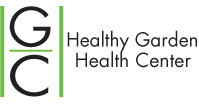Maybe it’s time for you now. You gave all year, each day giving more of yourself. Giving to children, nieces, nephews, elders, aunts, cousins, siblings, friends, neighbors, co-workers, significant others and, of course, pets. You may have given until it hurt and yet you still continue to give.
When is it your time?
The time you thank and appreciate yourself for a job well done. The time you take to meditate for a moment. Take time. Make time. Get some sunlight on your face; go for a walk; take that bath with essential oils; read that story you have wanted to read.
Do you take time each day to note all the things you've accomplished and give yourself credit?
Do you make time to think kind thoughts about who you are and what you create?
Some people like to take moments in throughout their day to meditate, to do yoga, to pray, to sit and clear their mind and think of absolutely nothing. Others write in a journal that may include a gratitude or triumph list in their daily routine. They put down anything going well in their life, anything they or other’s appreciate about them. They may include any big hurdles they recently overcame like ridding themselves of an addiction, mending a relationship or starting an exercise program.
Some people say affirmations throughout the day. “Every day, and every way I get better and better” was what Mensendecker said years ago as his positive affirmation. “I am fine the way I am”, “The planet is a safe and peaceful place”, “I will be part of the solution.” Those are some examples. What would your positive affirmations be for yourself, your loved ones, the country, the world? Please let us know, we would love to hear them.
Here are a few things you can give yourself credit for:
- Being consistent and conscientious in your work, inside or outside the home.
- Being a good friend and being loyal, dependable, and caring no matter what the situation.
- Being a loving family member. Putting those you love first, often ahead of yourself.
- Taking care of your physical health. Eating well and exercising as much as you can.
- Acting responsibly. Behaving responsibly or exhibiting responsible attitudes about finances or education.
- Making positive gains in any area!







